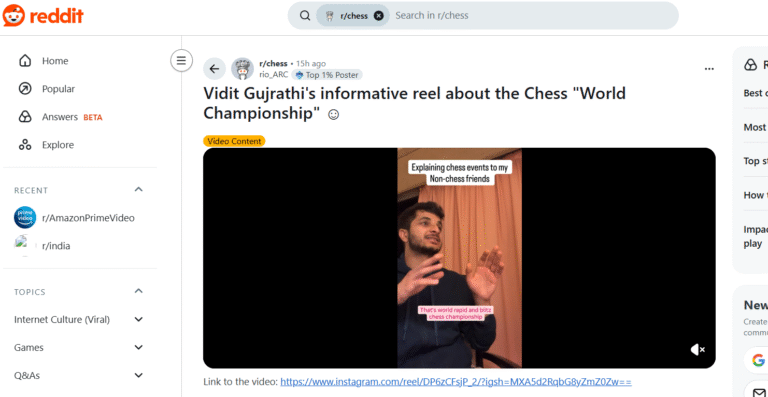
boAt's Decline in the Earbuds and Headphones Market Due to White-Labeling Chinese Products
boAt, the celebrated leader in the audio wearables market of India, now seems to face a significant sales and growth downturn.
Popular for their stylish and budget earbuds, headphones, and earphones, the company had captured most of the market with its aggressive pricing and smart marketing strategies. However, lately, there have been reports of the company losing sheen – from declining sales to falling growth rates and, for the first time, even layoffs involving 100-200 employees.
The Rise of boAt
Founded in 2016, boAt quickly became synonymous with affordable and trendy audio products in India. The brand’s early success was largely owed to its deep understanding of the Indian consumer’s need for stylish yet budget-friendly devices.
With catchy advertisement and partnerships with celebrities and influencers, boAt developed an emotional connection with the target audience. It reached a time when it dominated more than 30% of the audio wearables market in India, selling in volume more than Sony, JBL, and Bose. But the company’s fast growth was based on a strategy that has become its bane: white-labeling Chinese products.
White-Labeling Strategy and Its Consequences
White-labeling is a strategy through which generic products are sourced from manufacturers, and then the products are labeled as one’s own product.
boAt has entirely banked on this, importing low-cost audio devices from Chinese manufacturers, and then branding them as “Made in India.” Through this strategy, the firm was able to keep low costs and introduce new products at a very fast pace.
This strategy, although short-term successful, had its own set of flaws:
1. Poor Quality of Products
Many of boAt products, though stylish, lacked good quality. Complaints started arising that the products started breaking or malfunctioning in between 12-13 months.
Low-cost material and components used in these products made customers face the issues of poor sound quality, weak battery performance, and fragile builds. The customers were not satisfied because the problems kept on repeating under the warranty of replacement from boAt.
2. Lack of Product Differentiation
Because these were pretty much white-labeled, it had nothing new or different about the product. Competition, both at home and abroad, was offering better alternatives at more or less the same prices. Brands like OnePlus, Noise, and Realme filled this gap by giving better value-for-money with improved quality and features.
3. Misleading “Made in India” Claim
boAt marketed its products as “Made in India” to leverage the growing nationalism among Indian consumers. However, this claim was misleading: the products were sourced nearly entirely from China with slight assembly or cosmetic changes on the Indian side. Inevitably, when such a scam was exposed it led to a backlash with consumer confidence further eroding.
Declining Sales Growth
The implications of these strategic failures can be seen now in the financial results at boAt. The firm released an FY24 decline in revenues of 5% in a year, having earlier been growing in multiple fold. Moreover, in terms of cost cuts, the firm has downsized by 100-200 people, which clearly spells a deeper structural failure at hand.
Reports indicate that the company’s net losses have reduced by half, but that has more to do with cost cuts than revenue growth. Analysts believe that boAt’s growth story has plateaued, and the competition is getting tough with a waning customer trust.
Loss of Customer Trust
Customer loyalty is the backbone of any consumer-centric brand. boAt’s strategy of giving importance to volume over quality has really hurt its brand value.
When customers started experiencing repeated issues with their purchases, word-of-mouth reviews and online ratings suffered. Complaints about the brand’s quality and service are now flooding social media platforms.
Contrastingly, competitors have focused on building trust through durable products and transparent communication.
Brands like JBL and Sony, though priced higher, have seen consistent demand due to their reputation for quality. Even newer entrants like Noise and Fire-Boltt have managed to carve out a loyal customer base by balancing affordability with reliability.
The Road Ahead
For boAt to regain its footing in the market, it needs to undergo a strategic overhaul:
1. Focus on Product Quality
Investment in research and development towards creating high-quality, long-lasting products is the key. It needs to stop white-labeling and design proprietary designs and features. This will help boAt differentiate itself from competitors and rebuild customer trust.
2. Transparent Marketing
The company should embrace truthfully marketing practices by telling people where they make their products and how much they value. False and misleading claims have a permanent and long-lasting impact; a case in point being that of boAt.
3. Diversification and Innovation
boAt needs to consider diversification by offering its product under multiple categories. Innovative features, such as active noise cancellation, longer battery life, and customizable sound profiles, would appeal to technology-savvy buyers.
4. Enhance After-Sales Service
Improving customer support and warranty policies can help reduce the effect of product issues on customers’ loyalty. After-sales service networks that are responsive and efficient can change unsatisfied customers into brand advocates.
5. Local Manufacturing
Assembling products locally, or even manufacturing components in India, can strengthen boAt’s claim of being a “Made in India” brand. This move would not only align with the government’s initiatives but also resonate with the patriotic sentiments of Indian consumers.
boAt’s decline is a cautionary tale for businesses that prioritize short-term gains over long-term sustainability. The company’s reliance on white-labeled Chinese products and its inability to address quality concerns have led to a loss of customer trust and market share.
To regain its market leader status, boAt needs to switch the focus to quality, innovation, and transparency. This is going to be a very tough road, but if the strategy goes through properly, the brand might come out of its present crisis stronger in this audio wearables market that’s so competitive.








